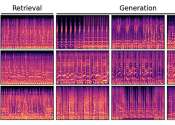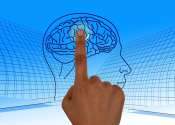Brain2Music taps thoughts to reproduce music
Legendary Stones guitarist Keith Richards once said, "Music is a language that doesn't speak in particular words. It speaks in emotions, and if it's in the bones, it's in the bones."
Hi Tech & Innovation

Legendary Stones guitarist Keith Richards once said, "Music is a language that doesn't speak in particular words. It speaks in emotions, and if it's in the bones, it's in the bones."
Other

Recent advancements using artificial intelligence to extract meaningful thoughts from brain waves have concerned human rights and privacy advocates, who say technology is developing at a rate faster than the law. It is the ...
Jun 27, 2023
1
13
Hi Tech & Innovation

Every day, tens of thousands of songs are released. This constant stream of options makes it difficult for streaming services and radio stations to choose which songs to add to playlists. To find the ones that will resonate ...
Jun 20, 2023
2
315
Hi Tech & Innovation

"Alexa, play back that dream I had about Kirsten last week." That's a command that may not be too far off in the future, as researchers close in on technology that can tap into our minds and retrieve the imagery of our thoughts.
Machine learning & AI

For the first time, researchers have managed to use GPT1, precursor to the AI chatbot ChatGPT, to translate MRI imagery into text in an effort to understand what someone is thinking.
May 23, 2023
0
19
Machine learning & AI

There has been shock around the world at the rapid rate of progress with ChatGPT and other artificial intelligence created with what's known as large language models (LLMs). These systems can produce text that seems to display ...
May 18, 2023
1
17
Machine learning & AI

New research from the University of California, Berkeley, shows that artificial intelligence (AI) systems can process signals in a way that is remarkably similar to how the brain interprets speech, a finding scientists say ...
May 2, 2023
0
1319
Machine learning & AI

Scientists said Monday they have found a way to use brain scans and artificial intelligence modeling to transcribe "the gist" of what people are thinking, in what was described as a step towards mind reading.
May 1, 2023
0
706
Computer Sciences

Interacting with computers by brain activity seems less futuristic these days, thanks to researchers and entrepreneurs who have been attempting to tap the potential of brain-computer interfaces for augmented cognitive abilities.
Mar 29, 2023
0
45
Machine learning & AI

Natural Language Processing (NLP) refers to the technology that enables machines to interact and communicate with humans through natural language used in humans' daily communication. This technology allows computers to express ...
Mar 23, 2023
0
12
Electroencephalography (EEG) is the recording of electrical activity along the scalp produced by the firing of neurons within the brain. In clinical contexts, EEG refers to the recording of the brain's spontaneous electrical activity over a short period of time, usually 20–40 minutes, as recorded from multiple electrodes placed on the scalp. In neurology, the main diagnostic application of EEG is in the case of epilepsy, as epileptic activity can create clear abnormalities on a standard EEG study. A secondary clinical use of EEG is in the diagnosis of coma and encephalopathies. EEG used to be a first-line method for the diagnosis of tumors, stroke and other focal brain disorders, but this use has decreased with the advent of anatomical imaging techniques such as MRI and CT.
Derivatives of the EEG technique include evoked potentials (EP), which involves averaging the EEG activity time-locked to the presentation of a stimulus of some sort (visual, somatosensory, or auditory). Event-related potentials refer to averaged EEG responses that are time-locked to more complex processing of stimuli; this technique is used in cognitive science, cognitive psychology, and psychophysiological research.
This text uses material from Wikipedia, licensed under CC BY-SA